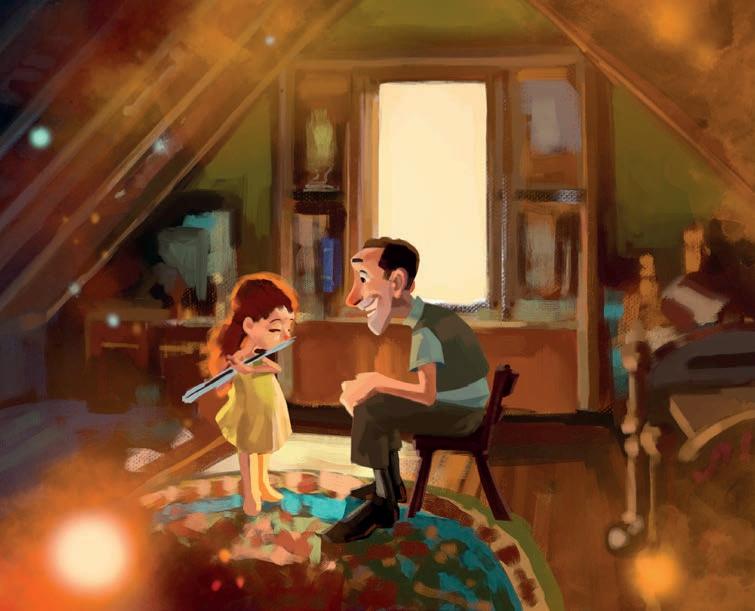
2 minute read
South Africa Richard Murombedzi
THE HOUSE AT THE END OF MEMORY LANE Richard Murombedzi
Olly, a little farm boy, and his family move into a ramshackle house. Olly is not happy about the move, and as he tries to fall asleep in his new bed, he keeps hearing scary noises tittering through the house. During another fitful night, he decides to go and investigate the noises, relying on his mighty flashlight and his trusty sidekick, Cockaroo, a chicken who displays an array of animal traits, to keep him safe. As they search through the house, they only come across noisy farm animals. Then they hear whistling pipes from the attic and Cockaroo quickly leads the way to the source of the noise.
Advertisement
In the attic, they find a strange-looking creature playing a forlorn flute. Olly approaches him, aims the flashlight and shouts ‘freeze!’.
Instead, the creature projects a memory of a young girl playing the flute for her father. The creature, Cerrebelmus, explains that his previous owners accidentally left him behind when they moved, and soon he will be forgotten and disappear forever. Concerned, Olly assures him that he will help. He tries to think of a plan. In the end he takes the flute, and starts playing it. Music fills the room and Cerrebelmus becomes brighter.
From then on, Olly understands the importance of keeping memories close to your heart and makes sure never to forget them. In 2015, RICHARD

MUROMBEDZI enrolled in a Film Arts degree at the Open Window Institute in Centurion, South Africa, where he discovered an aptitude for Cinematography and Animation. He refocused his degree to Film and Cinematography, achieving filming awards as well as screenings at Silwerskerm and the Lens Flare Film Festival. Since then he has been exploring documentary filmmaking as his source of relatable and authentic stories. Through this medium he found he was able to enhance a story by taking advantage of angles and lighting elements to infuse a still frame with emotion. This has led to a shift in his traditional art, which he still does in his free time, as he has learnt to make narratives more appealing. Although film remains a big part of his career, he has veered back to traditional art in the last few years. He sees himself firstly as a storyteller, having developed skills that are flexible in executing a narrative rich in colour and meaning, to inspire an audience with expressive stories. Although new to children’s book illustrations, he has found a distinct innocence about it that resonates with him – and he hopes to have the opportunity to develop himself further as he inspires a young generation to view the world in vivid colours.


JURY REPORT Richard Murombedzi’s work is atmospheric and striking, and highly publishable. His illustrations are rich in detail, hinting at a fine sense of humour. He clearly has the ability to create appealing, expressive characters who come to life on the page. His use of comic book frames add a contemporary feel to the illustrations and makes his work accessible and narratively rich. It would be wonderful to see this talented, accomplished illustrator’s work in print.











